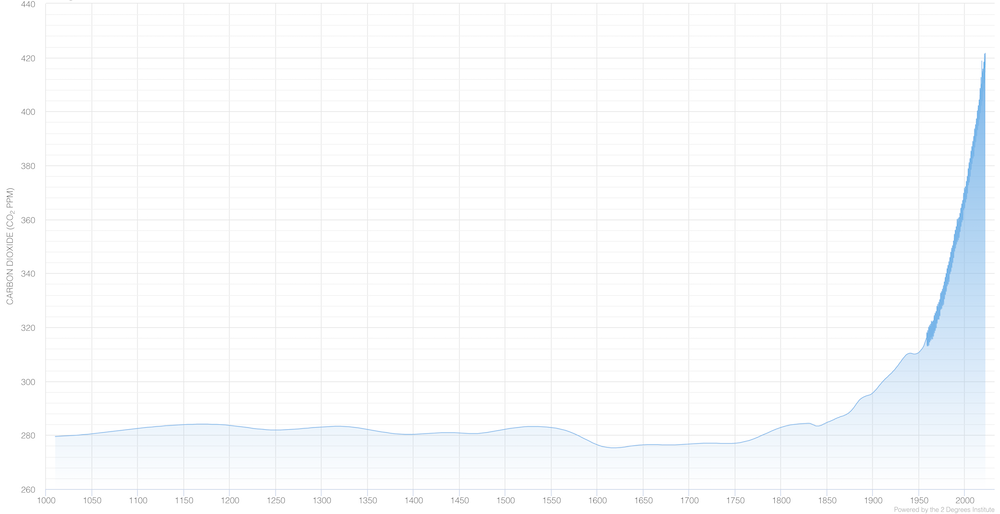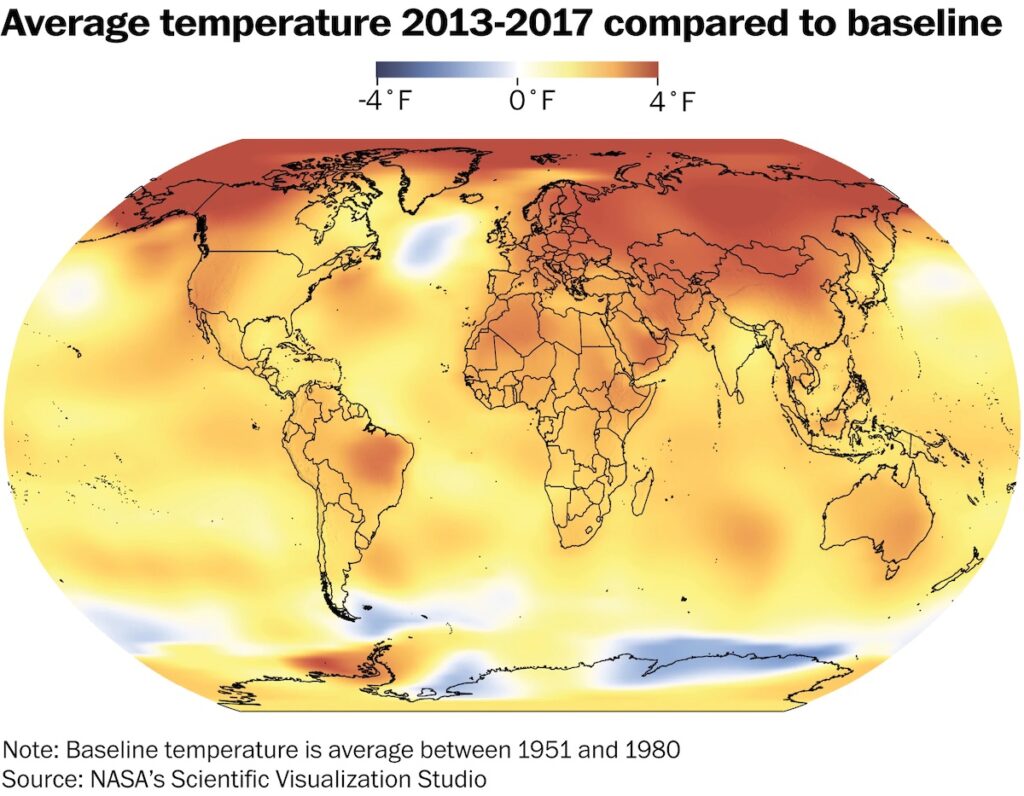ABCs of Climate Change
With the guidance of scientist and educator Christa Sadler, we’ve created a resource for understanding the fundamentals of climate change. Our climate series will cover the role public lands play in climate change mitigation and adaptation. And the best place to start is to know the basics.
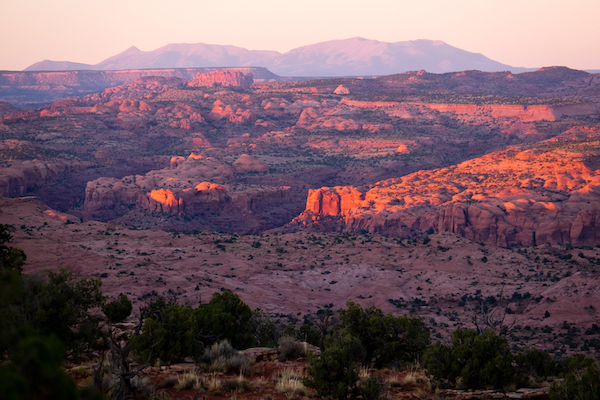
Understanding the Basics
Click on the following questions to reveal the explanations.
What’s the difference between weather and climate?
It’s about time.
Weather refers to the conditions of the atmosphere over a short period of time: days, weeks, or months. Weather is local or regional and has more to do with relatively short-term phenomena—like daily or seasonal changes.
Climate refers to the behavior of the atmosphere over a long period of time: decades, centuries, or millenia. Climate reflects a long-term average of weather events, and it depends largely on the amount of solar energy absorbed by Earth and retained by the earth’s atmosphere. Global warming contributes to changes in both weather and climate.1
To understand how this change happens, it’s important to know more about the greenhouse gases, solar energy, and the greenhouse effect.
What is solar energy?
Sunlight is radiant, providing heat energy to the Earth system.
The sun emits energy in different wavelengths, ranging from ultraviolet, through the visible spectrum of light, and on to infrared. Normally, the clouds and atmospheric gases absorb about 20% of this solar energy, 25% radiates back to space, and the rest is absorbed by the earth’s surface.
The solar spectrum along the electromagnetic spectrum. Source: brilliant.org/practice/spectral-properties-sunlight
The radiation produced by the sun is shortwave radiation (ultraviolet and visible light). Sunlight makes life possible. Plants use sunlight to make sugars and grow, which in turn sustains the rest of life on earth. Every bite you take is infused with the sun’s energy.
When solar radiation is absorbed by the earth, it reemits some of that energy as longwave radiation, also known as infrared radiation. Longwave/Infrared radiation produces what we experience as heat or warmth.
The amount of greenhouse gasses in the atmosphere impact how much of this energy dissipates into space and how much remains in the earth system.
What is a greenhouse gas?
Our earth is enveloped by an insulated jacket made from gases—and some of the gaseous materials that make up this jacket determine if we are too warm, too cold, or just right for plant and animal life.
Increasing greenhouse gas concentrations are expected to lead to climatic changes that may be difficult for species (including humans) to adapt to.
The Earth’s atmosphere is made up of gases held by earth’s gravitational pull. They are mostly nitrogen, oxygen, argon, and carbon dioxide. Most of these gases are within 10 miles above you now, then gradually dissipate over a few hundred miles into the vacuum of space. As solar energy enters the atmosphere and is absorbed and reemitted by Earth, these gases play an important role in regulating this energy/heat.
A key feature of greenhouse gases is that they absorb (and then reemit) infrared radiation/heat energy. As a result, when the earth absorbs incoming solar radiation and reemits some of that energy in the form of infrared radiation, not all of that dissipates back into space. The more greenhouse gases in the atmosphere, the more heat/energy is kept within Earth’s atmosphere.2
Greenhouse gases—which include water vapor, carbon dioxide (CO2), methane, ozone, and nitrous oxide—are those that have chemical structures that allow for efficient absorption of infrared radiation. In contrast, some gases in the atmosphere, such as pure oxygen (O₂) and pure nitrogen (N₂), are not considered greenhouse gases because their chemical structure is not conducive to absorbing and reemitting infrared radiation.
The “greenhouse effect.” Illustration by: A loose necktie / CC BY-SA
Water vapor is by far the most common greenhouse gas, but even in small numbers, CO2 and methane can have a big effect as they are more effective at absorbing longer wavelengths of light.
Special Note: One of the first scientists to discover the relationship between CO2 and a warming atmosphere was Eunice Foote. Her discovery in 1856 is largely overlooked, and we invite you to learn more about her innovative experiments here.
If water vapor is the most common greenhouse gas, why do I hear so much about CO2?
CO2 is a powerful absorber of heat energy and its concentration is greatly influenced by human activity.
Both CO2 and water vapor are impactful greenhouse gases. Although CO2 is not found in as high of concentrations as water vapor, CO2 concentrations are more significantly impacted by human activity (as are the concentrations of other greenhouse gasses such as methane).
Whereas the amount of water vapor in the atmosphere has remained relatively similar through time, CO2 concentrations have increased significantly over the past 200 years due to the Industrial Revolution and the building of economies centered on fossil fuels (increased warming from increased CO2 and methane can, however, impact the amount of water vapor in the atmosphere, potentially amplifying warming effects).
A great example of a runaway greenhouse effect is Venus, whose atmosphere is more than 96 percent CO2, and which has a mean surface temperature of 867 degrees Fahrenheit. If Venus ever had surface water, it long ago vaporized as the temperature rose.
For less extreme examples, there have been numerous instances throughout Earth’s past during which greenhouse gas concentrations have been significantly higher than they are today—however, it’s important to remember that these were times before contemporary species had evolved and most changes in greenhouse gas concentrations occurred over much longer time scales than they are today.
While our planet is habitable because of the presence of greenhouse gases, a proper balance is necessary to survive. If the concentration of those gases is too high, we end up with climatic conditions that humans (and many other plants and animals) are not adapted to.
What do humans have to do with the rise of greenhouse gases in our atmosphere?
Human activity has been a key driver of rapidly increasing greenhouse gas concentrations in the past 150 years.
In 1958, Dr. Charles Keeling began measuring atmospheric CO2 levels at the Mauna Loa Observatory. He compared ice cores from 1700 to 1958 with data from the observatory. His results showed that the level of CO2 in our atmosphere (expressed in parts per million–ppm) stayed relatively constant until the early 1900s, when it began to slowly and consistently rise.
Around the late 1950s, the curve of atmospheric CO2 concentration steepened dramatically.
The Keeling Curve, illustrating atmospheric CO2 levels from 1700 to the present. Courtesy Scripps Institute of Oceanography
The Mauna Loa (and other) research extends as far back as 10,000 years (through temperature proxies), demonstrating an essentially flat line that hovers around 280 ppm until suddenly skyrocketing in the late 1950s. Today, our planet’s atmospheric CO2 concentration is around 413 ppm—a level not seen for 3 million years–reflecting an exponential growth in greenhouse due to fossil-fuel-centric production and consumption.
And it’s still rising.3
Global CO2 levels from the year 1000 to the present. Courtesy of CO2levels.org
The climate has changed naturally, so what are we worried about?
Such abrupt changes in greenhouse gas concentrations may result in climatic changes at a pace that is hard to adapt to.
Earth’s climate has varied greatly throughout its entire history, including both “hothouse” and “icehouse” conditions. However, compared to investigations of past climatic change, what we observe today is the unprecedented speed at which we are changing atmospheric concentrations of greenhouse gases.
The rapidity with which this change is occurring may result in change to which biological systems (including our own) cannot adapt in time.4
What kind of human activities produce greenhouse gases?
Fossil fuel production, transportation, agriculture, and manufacturing are significant contributors of anthropogenic greenhouse gas emissions.
Although fossil fuel production (oil, gas, and coal) and transportation using those fossil fuels are often held up as a major culprit (and rightly so), humans also create greenhouse gases in many other ways.
Agriculture (both plant and animal production) is responsible for up to a quarter of all greenhouse gas emissions. Deforestation and burning for development and agriculture releases the carbon that was stored in plants (and also removes a major receptacle—or “sink”—that previously took up extra CO2 in the atmosphere).
The manufacture of concrete (which is the most common building material around the world) releases CO2, as does the manufacture of plastics.
Air conditioning, too, is a large source of greenhouse gases, and the use of air conditioning is increasing around the world as countries become more affluent (and as the need for it increases along with rising temperatures).
These are just a few examples of how human activity emits greenhouse gases.5
What effect does a warming atmosphere (global warming) have on the rest of our planet’s systems?
There are significant implications across all of earth’s systems.
It affects pretty much everything, as these systems are interconnected. The atmosphere affects our oceans and is in turn affected by them. This relationship means that a warming atmosphere results in warming oceans. As wind patterns change, they will change the ocean currents below. This ultimately affects the normal circulation of cold and warm water currents, which causes massive changes in global weather patterns at sea and on land, affecting things like the position, shape, and strength of the Jet Stream and the Gulf Stream, among many others.6
Think of a warming planet as the earth on steroids. The systems that naturally occur on our planet become bigger, stronger, faster, and more unpredictable. Thus, where we normally have a hurricane season, we now have bigger and more powerful hurricanes each season as the storm systems draw more energy from the warmer sea water.
As ice caps and glaciers melt, the additional cold, fresh water changes ocean circulation and makes storm cycles shift. Winters get colder in cold places. Summers get hotter. Arctic “bomb cyclones” hit the northeast U.S. as the Jet Stream moves. Droughts settle over the southwestern United States and Australia. Europe’s flood cycle and frequency is changing.7 Places that normally experience drought are experiencing much deeper and longer dry spells, causing massive wildfires, which release even more carbon into the atmosphere.8
Conversely, regions with a wetter climate are often being inundated with precipitation, causing more flooding, which only worsens near the coasts as sea level rises from melting ice.9
What indicators show the world is warming?
There are several major climate change variables that researchers monitor to watch for trends in global warming. Among others, these include sea level, land surface air temperature, sea surface temperature, summer Arctic sea ice extent, glacier mass, and snow cover in the northern hemisphere.
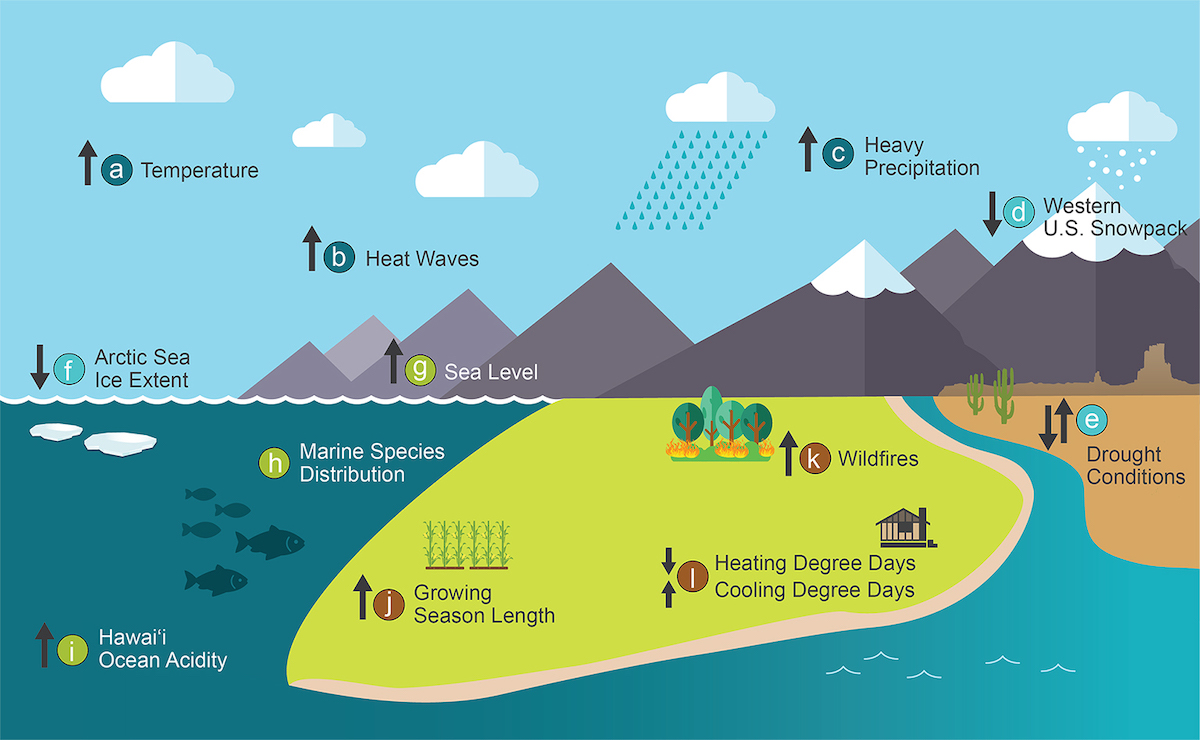 Indicators show an increase in a warming world, such as sea level, sea-surface temperature, and temperatures over ocean and land. More info at globalchange.gov/indicators
Indicators show an increase in a warming world, such as sea level, sea-surface temperature, and temperatures over ocean and land. More info at globalchange.gov/indicators
The image below shows Earth’s average global temperature from 2013 to 2017, compared to a baseline average from 1951 to 1980. Yellows, oranges and reds show regions warmer than the baseline.
Images courtesy of NASA State of the Climate Report, 2009, and The Washington Post
How has climate change affected the American Southwest where GSENM resides?
In the American Southwest, climate change is expressing itself in the form of warmer and drier weather, decreased snowpack in the high country (which results in less groundwater infiltration and decreased river flows), fewer but more violent monsoon storms, longer summers, and shorter, drier winters. Are there years that seem more like the “normal” ones we knew 40 years ago? Certainly, but the overall trend is clear.10
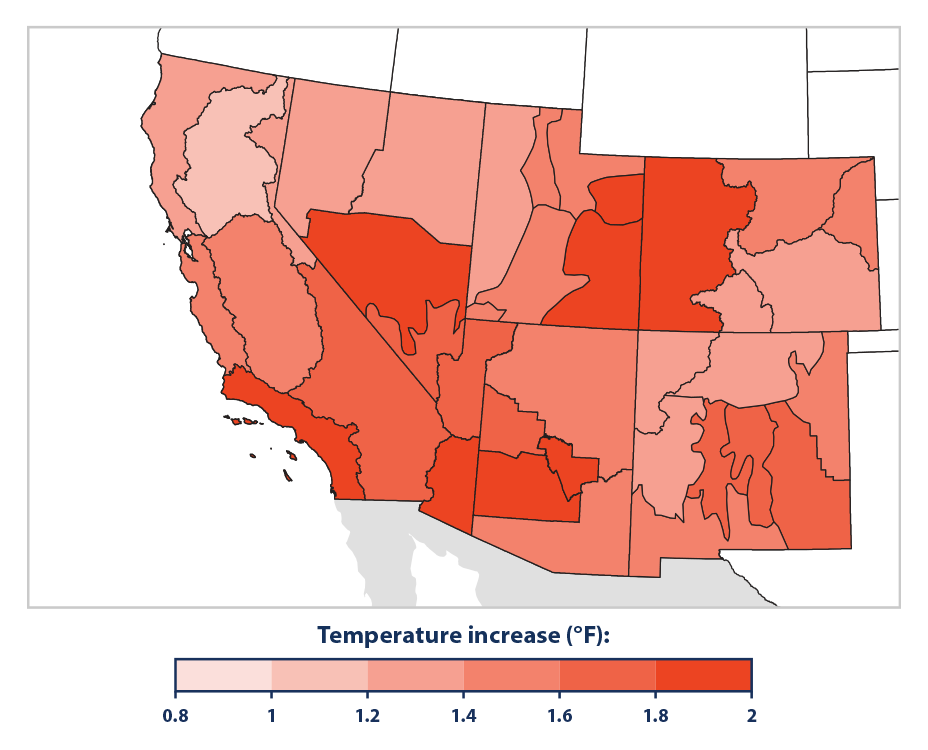 This figure shows the average air temperature from 2000 to 2015 compared to the long-term average between 1895 to 2015. Image courtesy of the Environmental Protection Agency, data from NOAA, 2016.
This figure shows the average air temperature from 2000 to 2015 compared to the long-term average between 1895 to 2015. Image courtesy of the Environmental Protection Agency, data from NOAA, 2016.
It goes without saying that there are many social, economic, and health implications of these changes, both in the Southwest and worldwide. Plant and animal species have become extinct, or have moved far from their original territories, and farming and ranching are now more of a gamble.111213
So what can we do?
There are still many ways that we can both adapt to and mitigate the effects of climate change—in our personal lives, businesses, industries, food production, and transportation. Over the next few months, we’ll look at how climate change is affecting our world, both close to home and further afield, and we’ll also explore ways that we can be a part of the myriad possible solutions.
One of the best places to start this journey is on our public lands, especially at Grand Staircase Escalante National Monument. Learn more by going to part 2 of our Climate Change Series.
How can I learn more about climate change?
If you would like to learn more about the basics of climate change and how our climate system works, the following are some excellent places to find information. There are many websites and resources for people of all ages, so we hope you’ll go learn more about this issue and how it is affecting our planet.
Acciona: acciona.com/climate-change
Intergovernmental Panel on Climate Change: ipcc.ch
NASA: climate.nasa.gov
National Geographic: nationalgeographic.org/encyclopedia/climate-change
NOAA: noaa.gov/climate
United Nations: un.org/en/sections/issues-depth/climate-change
World Meteorological Organization: public.wmo.int/en
To Conclude — we know from climate science that we can not stop climate change, but we can mitigate impacts and plan for how we will adapt—as a species and a world—to climate change.
For Partners, this means including climate change in all mission-driven programming land management advocacy related to Grand Staircase. It means considering climate change as we complete our strategic goals, plan our conservation activities, and design educational materials.
What can we do differently to mitigate climate change and plan for necessary adaptation? Is there something we can do in the Escalante watershed to ensure our ecosystems survive drought? Is there something we can do through education to help people better understand how protecting nature is one of the best ways for us to ensure that we are able to live in a climate changing world? These are the kinds of questions we will continue to ask. It is essential that we plan as much as possible—and saving Grand Staircase and public lands is an essential component of our planning.
Ultimately, we are planning for our survival, and the survival of our planet.
We hope you will join us.
How can you get involved?
No matter where you are or what you would like to do, there are several ways you can volunteer with Grand Staircase Escalante Partners.
In The Field
Our in-field opportunities includes graffiti removal, trail ambassadorship, and other live events. Click here to go to our Golden Volunteer platform to learn more about these opportunities.
On Your Own
We have resources for you to help protect this landscape on your own — from Citizen Science Programs to Site Stewardship. Click here for more details about how to register and get these resources.
From Anywhere
No matter where you are in the world, there are ways to support the Monument. Click here to learn more, or make a donation now by clicking the button at the top or bottom of the page.
Part 2: Climate Change and Public Lands
In this installment of our Climate Change series, we’ll explore the current focus on economic drivers, then explain the importance of public land in climate change mitigation and adaptation. We know from climate science that we can not stop climate change, but we can mitigate impacts and plan for how we will adapt—as a species and a world—to climate change.
- https://www.nasa.gov/mission_pages/noaa-n/climate/climate_weather.html
- https://scied.ucar.edu/longcontent/greenhouse-effect
- https://www.co2levels.org
- https://www.scientificamerican.com/article/todays-climate-change-proves-much-faster-than-changes-in-past-65-million-years
- http://www.projectdrawdown.org
- https://www.nationalgeographic.org/media/ocean-currents-and-climate
- https://www.sciencedaily.com/releases/2020/07/200722112655.htm
- https://www.sciencenews.org/article/australia-wildfires-climate-change
- https://coast.noaa.gov/slr
- https://nca2014.globalchange.gov/report/regions/southwest
- https://www.icrc.org/en/what-we-do/climate-change-conflict
- https://www.oxfam.org/sites/www.oxfam.org/files/file_attachments/bp210-economy-one-percent-tax-havens-180116-en_0.pdf
- http://www.un.org/sustainabledevelopment/blog/2016/10/report-inequalities-exacerbate-climate-impacts-on-poor/




